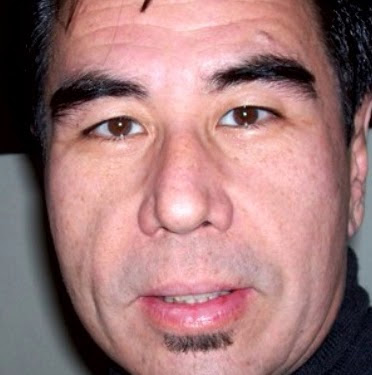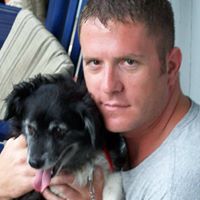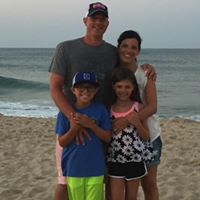Michael Robert Lafleur
age ~32
from Bedford, NH
- Also known as:
-
- Michael R Lafleur
Michael Lafleur Phones & Addresses
- Bedford, NH
- Wolfeboro, NH
- New Durham, NH
Medicine Doctors

Michael B. Lafleur
view sourceSpecialties:
Surgery , Neurological
Work:
Spine & Brain Neurosurgery Center
7460 Docs Grv Cir, Orlando, FL 32819
4079039360 (phone), 4079039710 (fax)
7460 Docs Grv Cir, Orlando, FL 32819
4079039360 (phone), 4079039710 (fax)
Languages:
English
Spanish
Spanish
Description:
Mr. Lafleur works in Orlando, FL and specializes in Surgery , Neurological. Mr. Lafleur is affiliated with Dr P Phillips Hospital, Florida Hospital Orlando, Health Central Hospital and Orlando Regional Medical Center.
Us Patents
-
Bobbins, Transformers, Magnetic Components, And Methods
view source -
US Patent:6593836, Jul 15, 2003
-
Filed:Jun 28, 1999
-
Appl. No.:09/342403
-
Inventors:Michael B. LaFleur - East Hampstead NH
Patrizio Vinciarelli - Boston MA -
Assignee:VLT Corporation - San Antonio TX
-
International Classification:H01F 2708
-
US Classification:336 61, 336 84 R, 336198, 336212, 336219
-
Abstract:A bobbin is adapted to support a winding on a permeable core and has a wall that provides a confined thermally conductive channel that causes conduction of heat along a predetermined path from the core to a location outside the winding. A value of magnetizing inductance in a transformer is set by adjusting the gap until the value of magnetizing inductance has been set and attaching a segment of the bobbin to a pair of core pieces to maintain the gap. A permeable strip provides a permeable path outside of the hollow interior space and does not couple the winding, and an electrically insulating coupler is interposed between the slug and the winding to electrically insulate the winding.
-
Bobbins, Transformers, Magnetic Components, And Methods
view source -
US Patent:6600402, Jul 29, 2003
-
Filed:Oct 20, 1998
-
Appl. No.:09/184461
-
Inventors:Michael B. LaFleur - East Hampstead NH
Patrizio Vinciarelli - Boston MA -
Assignee:VLT Corporation - San Antonio TX
-
International Classification:H01F 2708
-
US Classification:336 61, 336 84 R, 336198, 336212, 336219
-
Abstract:A bobbin is adapted to support a winding on a permeable core and has a wall that provides a confined thermally conductive channel that causes conduction of heat along a predetermined path from the core to a location outside the winding. A value of magnetizing inductance in a transformer is set by adjusting the gap until the value of magnetizing inductance has been set and attaching a segment of the bobbin to a pair of core pieces to maintain the gap. A permeable slug provides a permeable path outside of the hollow interior space and does not couple the winding, and an electrically insulating coupler is interposed between the slug and the winding to electrically insulate the winding.
-
Panel-Molded Electronic Assemblies
view source -
US Patent:20200253060, Aug 6, 2020
-
Filed:Apr 22, 2020
-
Appl. No.:16/854984
-
Inventors:- Andover MA, US
Michael B. LaFleur - East Hampstead NH, US
Sean Timothy Fleming - Worcester MA, US
Rudolph F. Mutter - North Andover MA, US
Andrew T. D`Amico - Beverly Hills CA, US -
International Classification:H05K 3/28
H05K 5/06
H05K 3/00
H01R 27/02
H05K 7/20
H01R 43/24
H01R 43/20
B29C 45/14
B29C 45/00
H05K 1/11
H05K 1/18 -
Abstract:A method of encapsulating a panel of electronic components such as power converters reduces wasted printed circuit board area. The panel, which may include a plurality of components, may be cut into one or more individual pieces after encapsulation. The mold may be used to form part of the finished product, e.g. providing heat sink fins or a surface mount solderable surface. Interconnection features provided along boundaries of individual circuits are exposed during the singulation process providing electrical connections to the components without wasting valuable PCB surface area. The molds may include various internal features such as registration features accurately locating the circuit board within the mold cavity, interlocking contours for structural integrity of the singulated module, contours to match component shapes and sizes enhancing heat removal from internal components and reducing the required volume of encapsulant, clearance channels providing safety agency spacing and setbacks for the interconnects. Wide cuts may be made in the molds after encapsulation reducing thermal stresses and reducing the thickness of material to be cut during subsequent singulation. External mold features can include various fin configurations for heat sinks, flat surfaces for surface mounting or soldering, etc. Blank mold panels may be machined to provide some or all of the above features in an on-demand manufacturing system. Connection adapters may be provided to use the modules in vertical or horizontal mounting positions in connector, through-hole, surface-mount solder variations. The interconnects may be plated to provide a connectorized module that may be inserted into a mating connector. Reuseable plates may be used instead of the heat sink panels. Alternatively the panel may be encapsulated in and separated from a re-useable mold after curing.
-
Panel-Molded Electronic Assemblies
view source -
US Patent:20160302312, Oct 13, 2016
-
Filed:Jun 17, 2016
-
Appl. No.:15/186189
-
Inventors:- Andover MA, US
Michael B. LaFleur - East Hampstead NH, US
Sean Timothy Fleming - Worcester MA, US
Rudolph F. Mutter - North Andover MA, US
Andrew T. D'Amico - Beverly Hills CA, US -
International Classification:H05K 3/28
H01R 27/02
H05K 1/11
H05K 3/00
H05K 5/06 -
Abstract:A method of encapsulating a panel of electronic components such as power converters reduces wasted printed circuit board area. The panel, which may include a plurality of components, may be cut into one or more individual pieces after encapsulation. The mold may be used to form part of the finished product, e.g. providing heat sink fins or a surface mount solderable surface. Interconnection features provided along boundaries of individual circuits are exposed during the singulation process providing electrical connections to the components without wasting valuable PCB surface area. The molds may include various internal features such as registration features accurately locating the circuit board within the mold cavity, interlocking contours for structural integrity of the singulated module, contours to match component shapes and sizes enhancing heat removal from internal components and reducing the required volume of encapsulant, clearance channels providing safety agency spacing and setbacks for the interconnects. Wide cuts may be made in the molds after encapsulation reducing thermal stresses and reducing the thickness of material to be cut during subsequent singulation. External mold features can include various fin configurations for heat sinks, flat surfaces for surface mounting or soldering, etc. Blank mold panels may be machined to provide some or all of the above features in an on-demand manufacturing system. Connection adapters may be provided to use the modules in vertical or horizontal mounting positions in connector, through-hole, surface-mount solder variations. The interconnects may be plated to provide a connectorized module that may be inserted into a mating connector. Reuseable plates may be used instead of the heat sink panels. Alternatively the panel may be encapsulated in and separated from a re-useable mold after curing.
-
Panel-Molded Electronic Assemblies
view source -
US Patent:20150181719, Jun 25, 2015
-
Filed:Mar 2, 2015
-
Appl. No.:14/635420
-
Inventors:- Sunnyvale CA, US
Michael B. LaFleur - East Hampstead NH, US
Sean Timothy Fleming - Worcester MA, US
Rudolph F. Mutter - North Andover MA, US
Andrew T. D'Amico - Beverly Hills CA, US -
International Classification:H05K 3/28
H05K 5/06
H05K 7/20 -
Abstract:A method of encapsulating a panel of electronic components such as power converters reduces wasted printed circuit board area. The panel, which may include a plurality of components, may be cut into one or more individual pieces after encapsulation with the mold forming part of the finished product, e.g. providing heat sink fins or a surface mount solderable surface. Interconnection features provided along boundaries of individual circuits are exposed during the singulation process providing electrical connections to the components without wasting valuable PCB surface area. The molds may include various internal features such as registration features accurately locating the circuit board within the mold cavity, interlocking contours for structural integrity of the singulated module, contours to match component shapes and sizes enhancing heat removal from internal components and reducing the required volume of encapsulant, clearance channels providing safety agency spacing and setbacks for the interconnects. Wide cuts may be made in the molds after encapsulation reducing thermal stresses and reducing the thickness of material to be cut during subsequent singulation. External mold features can include various fin configurations for heat sinks, flat surfaces for surface mounting or soldering, etc. Blank mold panels may be machined to provide some or all of the above features in an on-demand manufacturing system. Connection adapters may be provided to use the modules in vertical or horizontal mounting positions in connector, through-hole, surface-mount solder variations. The interconnects may be plated to provide a connectorized module that may be inserted into a mating connector.
-
Panel-Molded Electronic Assemblies
view source -
US Patent:20150181727, Jun 25, 2015
-
Filed:Mar 2, 2015
-
Appl. No.:14/635467
-
Inventors:- Sunnyvale CA, US
Michael B. LaFleur - East Hampstead NH, US
Sean Timothy Fleming - Worcester MA, US
Rudolph F. Mutter - North Andover MA, US
Andrew T. D'Amico - Beverly Hills CA, US -
International Classification:H05K 5/00
H05K 5/02
H05K 5/04
B23P 15/00
H01F 27/28
H05K 1/11
H05K 1/02
H05K 1/18
H01F 27/24
B29C 45/16
H05K 7/14 -
Abstract:A method of encapsulating a panel of electronic components such as power converters reduces wasted printed circuit board area. The panel, which may include a plurality of components, may be cut into one or more individual pieces after encapsulation with the mold forming part of the finished product, e.g. providing heat sink fins or a surface mount solderable surface. Interconnection features provided along boundaries of individual circuits are exposed during the singulation process providing electrical connections to the components without wasting valuable PCB surface area. The molds may include various internal features such as registration features accurately locating the circuit board within the mold cavity, interlocking contours for structural integrity of the singulated module, contours to match component shapes and sizes enhancing heat removal from internal components and reducing the required volume of encapsulant, clearance channels providing safety agency spacing and setbacks for the interconnects. Wide cuts may be made in the molds after encapsulation reducing thermal stresses and reducing the thickness of material to be cut during subsequent singulation. External mold features can include various fin configurations for heat sinks, flat surfaces for surface mounting or soldering, etc. Blank mold panels may be machined to provide some or all of the above features in an on-demand manufacturing system. Connection adapters may be provided to use the modules in vertical or horizontal mounting positions in connector, through-hole, surface-mount solder variations. The interconnects may be plated to provide a connectorized module that may be inserted into a mating connector.
Name / Title
Company / Classification
Phones & Addresses
Principal
Sugar House Kaison
Nonclassifiable Establishments
Nonclassifiable Establishments
75 Frst Rd, Weare, NH 03281
Resumes

Michael Lafleur
view source
Facility Operations Manager
view sourceWork:
Facility Operations Manager

Michael Lafleur
view source
Michael Lafleur
view source
Michael Lafleur
view sourceLocation:
United States
License Records
Michael L Lafleur
License #:
32802 - Expired
Category:
Tow Truck Operator (Consent Tow)
Expiration Date:
Oct 31, 2015
Lawyers & Attorneys

Michael Lafleur - Lawyer
view sourceSpecialties:
Criminal Litigation
Civil Litigation
Municipal Law
Environmental Law
Civil Litigation
Municipal Law
Environmental Law
ISLN:
909758446
Admitted:
1980

Michael Lafleur - Lawyer
view sourceSpecialties:
Family
Criminal Defense
Litigation
General Practice
Contracts & Agreements
Criminal Defense
Criminal Defense
Litigation
General Practice
Contracts & Agreements
Criminal Defense
ISLN:
1000575940
Admitted:
2007
Law School:
University of Maryland School of Law, JD - Juris Doctor, 2006
Googleplus

Michael Lafleur
Work:
Visteon - Technical Professional (2000)
Education:
University of Michigan - BSEE, Wayne State University - MS Control Systems Engineering

Michael Lafleur
Work:
Arietis

Michael Lafleur

Michael Lafleur

Michael Lafleur

Michael Lafleur
Flickr
Youtube
Myspace
Plaxo

Michael LaFleur
view sourceself employed

Michael LaFleur
view sourceAll Sped

Michael E. Lafleur
view source
Michael Jay Lafleur
view source
Michael LaFleur
view source
Michael LaFleur
view source
Michael Lafleur
view source
Michael Lafleur
view source
Michael Sean Lafleur
view source
Michael Lafleur
view sourceClassmates

Michael Lafleur
view sourceSchools:
Carver High School Carver MA 2001-2005
Community:
Ian Cariolo, Marisue Hickman, Tracey Wood

Michael Lafleur
view sourceSchools:
Cleveland Elementary School San Francisco CA 1970-1972, Glen Park Elementary School San Francisco CA 1970-1975, Fremont Elementary School San Francisco CA 1973-1975, Woodrow Wilson Elementary School Daly City CA 1973-1977, Colma Middle School Daly City CA 1977-1981
Community:
Sheila Randall, Dianna Gunn, Ruben Macareno, Barn Yard

Michael Lafleur
view sourceSchools:
Lawtell High School Lawtell LA 1962-1966
Community:
Cynthia Hursey, Judy Jolivette, Selina Romero

Michael Lafleur
view sourceSchools:
Capac High School Capac MI 1975-1979
Community:
Deborah Dargay, Clara Ondersma

Michael Lafleur
view sourceSchools:
St. Joseph's High School Ottawa Morocco 1966-1970
Community:
Arnie Ziffel, Bob Adamyk, Cathy Barnes, Mike O'leary, Valerie Chartier

Michael Lafleur
view sourceSchools:
Centennial High School Montreal Kuwait 1996-2000
Community:
Selina Gariepy, Arvinder Jheeta, Kevin Assels, Celina Perrault, Tanya Zap, Emelie Lozier, Amber Black, Alexander Workman, Eric Morris, Sutton Eliane

Carver High School, Carve...
view sourceGraduates:
Michael Lafleur (2001-2005),
Alyssa Greenidge (2002-2006),
Benjamin Fowers (1996-2000),
Jessica Murphy (1997-2001),
Jeremy Hedges (1997-2001)
Alyssa Greenidge (2002-2006),
Benjamin Fowers (1996-2000),
Jessica Murphy (1997-2001),
Jeremy Hedges (1997-2001)

Capac High School, Capac,...
view sourceGraduates:
David Sanderson (1965-1969),
Roy Allen III (1989-1993),
Kevin Kuczek (1981-1985),
Michael Lafleur (1975-1979),
Nicholas Vivian (1997-2001)
Roy Allen III (1989-1993),
Kevin Kuczek (1981-1985),
Michael Lafleur (1975-1979),
Nicholas Vivian (1997-2001)
Get Report for Michael Robert Lafleur from Bedford, NH, age ~32
















